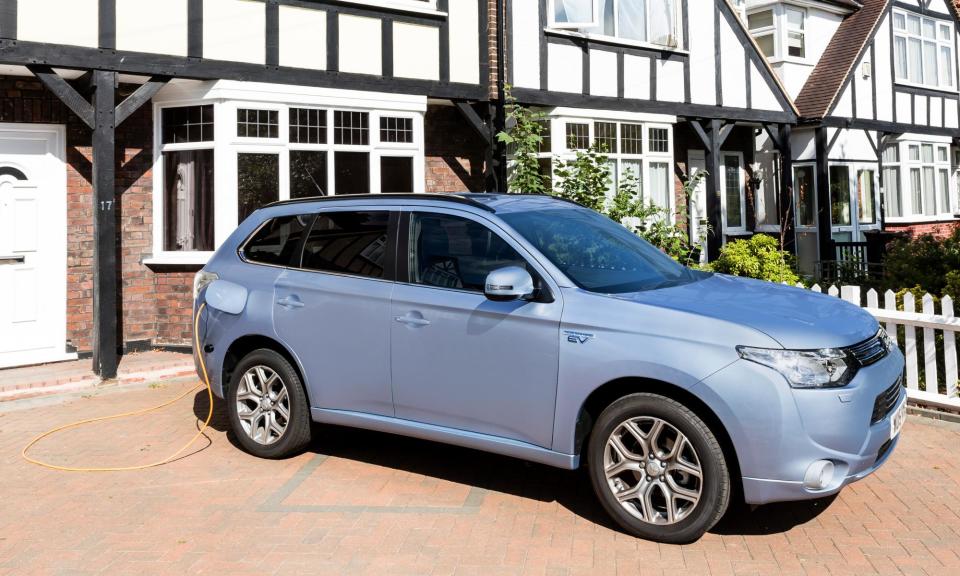Plug-in hybrid cars ‘costing £500 a year more to refuel than lab tests suggest’

Drivers of bestselling plug-in hybrid cars pay £500 a year more on fuel for their cars than manufacturers’ figures suggest, according to analysis of real-world data, largely because owners tend to charge them less frequently than expected.
Laboratory tests of plug-in hybrid electric vehicles (PHEVs) suggest that fuel should cost £560 a year, but real-life data suggests the cost is nearly double that, at £1,059 a year, according to analysis by the Energy and Climate Intelligence Unit (ECIU), a climate research group.
Plug-in hybrids are being sold by carmakers as a transitional step towards pure battery-electric vehicles (BEVs), and sales of PHEVs in the UK have grown faster than those of all-electric cars during 2024.
Hybrids combine a smaller battery with an internal combustion engine. That allows them to be more efficient – saving fuel and reducing carbon emissions – than petrol or diesel-only equivalents. Plug-in hybrids, with a battery that can be externally topped up via a charger cable, are capable of travelling up to about 40 miles without their engine being used.
In theory, a PHEV’s battery should be used for almost every journey: 94% of car trips in England are under 25 miles. In practice, however, their owners often do not plug them in, instead relying on their polluting internal combustion engines.
The EU’s European Commission in March found that real-world carbon emissions from PHEVs first registered in 2021 were on average 3.5 times higher than in laboratory tests, “largely because they are not being charged and driven fully electrically as frequently as assumed”.
The EU figures confirmed that plug-in hybrids still delivered significant fuel savings compared with standard petrol cars. The ECIU found that petrol cars would cost £1,652 a year to fuel. That was 56% higher than for PHEVs, and more than four times more than driving an electric car, which uses energy far more efficiently. Electric car owners on average pay £388 a year to charge if they can do this at home, the ECIU said. Costs would be higher for people dependent on public charging points.
Colin Walker, the ECIU’s head of transport, said a “petrol premium” of hundreds of pounds a year still applied to plug-in hybrid cars.
“It’s important [potential car buyers] are made aware of the fact that, according to the data, not only do PHEVs produce 350% more CO2 than their manufacturers claim, they won’t deliver fuel savings anywhere near as impressive as they are being led to believe,” he said.
Ben Nelmes, the chief executive of New AutoMotive, a thinktank arguing for faster adoption of electric cars, said PHEV sales were increasing in Europe and the UK because of tightening emissions rules. However, he said the commission data showed that hybrids were “failing to deliver in the real world”.
“This highlights the dangers of passing laws that try to reduce the environmental impact of fossil-fuelled vehicles,” he said. “This approach will always rely on tests that fail to reflect real-world driving or unrealistic claims by manufacturers. The UK is sensibly avoiding this problem by transitioning to a regulatory approach that focuses on cutting out tailpipe emissions altogether and making a clean break with the internal combustion engine.”
The UK’s zero emissions vehicle (ZEV) mandate will force manufacturers to sell an increasing proportion of electric cars until sales of new petrol and diesel engines are banned in 2035.

 Yahoo Finance
Yahoo Finance 